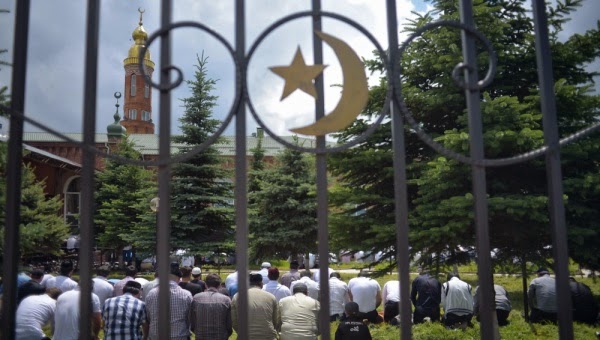
FSB Worried About Spread of Radical Islam in the Urals
By Paul Goble
The director of the Russian Federal Security Service (FSB), Aleksandr Bortnikov, says that his organization is concerned about the spread of radical Islam among young people in the Urals Federal District (FD). He notes that over the past five years, Russian security services have identified about 600 Islamist “neophytes,” who have fallen under the influence of foreign radical missionaries that moved to the region along with migrant workers (Interfax, April 14).
According to Bortnikov, the threat of radical Islam persists in the region. Last year, he says, there were 19 cases brought against members of a cell of Hizb ut-Tahrir, a group he identified as “an international terrorist organization.” Given the “growing flood of immigrant workers to Urals factories,” the authorities need to think about how to create “reliable legal and organizational-administrative barriers capable of blocking the penetration onto the territory of the district of persons who intend to engage in diversionary and terrorist acts.”
Although there may be some Muslims in the Middle Volga and Urals region who have been influenced by Islamist radicals from Central Asia, there are three reasons why Bortnikov’s remarks appear to point to a significant shift in Russian policy toward the largest, but also the quietest Muslim community in the Russian Federation. And that change, almost certainly, will spark resistance and reaction.
First, Bortnikov is the most senior Russian official to make this kind of charge about the Urals FD. His statements will encourage more officials and specialists to discuss this issue, possibly blowing it out of proportion. Over the last decade, a growing number of journalists and commentators, both regional and Moscow-based, have written or spoken out on Islamist radicalization in the Middle Volga. Now, there will be an explosion of such articles, regardless of whether Bortnikov’s trend analysis is even valid.
Second, by linking the issue of Islamism in the Urals to the increased presence of Central Asian migrants, Bortnikov has encouraged anti-immigrant sentiment. Indeed, many local officials may be encouraged to denounce these immigrants as a way of protecting themselves against charges from Moscow. They would rather not risk being accused of somehow protecting or encouraging the presence of Islamist radicals. In that case, it will be Central Asians, rather than locals, who will be the first victims of what could possibly become a witch hunt.
And third, Bortnikov’s words are certain to lend credibility to the writings of radicals such as Rais Suleymanov, a former analyst of the Russian Institute for Strategic Research (RISI), who has become notorious for his attacks on Islam and the Tatar establishment. Support from above could quite possibly open the way to renewed attacks on not only on Islamist groups in the Middle Volga, but also on the leaders of the predominantly Muslim republics there (for background, see Windowoneurasia2.blogspot.com, December 30, 2014).
All things considered, the future of the Middle Volga may well resemble the past of the North Caucasus. This outcome is something the Moscow could not possibly support, but is nonetheless a future it seems to be doing everything to provoke.




